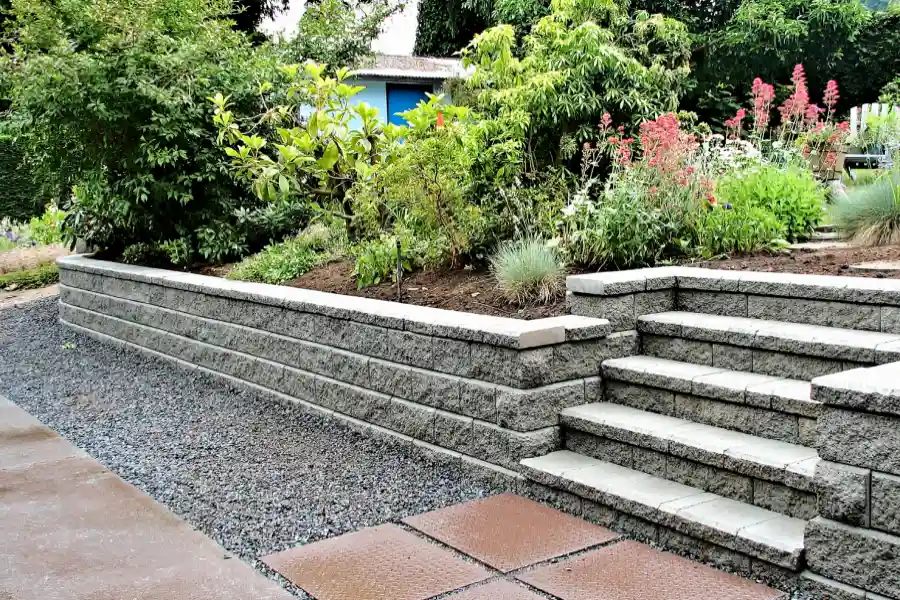Effective Strategies for Slope Management
Dealing with a sloped yard can be challenging, but using retaining walls offers a practical solution. These structures not only enhance the visual appeal of your garden but also prevent soil erosion and create more usable space. Understanding how to design and maintain these walls can transform your outdoor area into an organized and beautiful landscape. Let’s explore the benefits, challenges, and best practices associated with retaining walls.
Benefits of Retaining Walls
Retaining walls provide several advantages when managing a sloped yard. Firstly, they help prevent soil erosion by holding back soil and water. Secondly, they increase the usable space in your yard, allowing for the creation of terraces or flat areas for gardening or play. Additionally, they add aesthetic value by creating defined lines and levels that enhance the overall look of your property.
Tackling Common Challenges
Before you start building retaining walls, it’s important to consider potential issues. One challenge is ensuring stability; poorly constructed walls may collapse under pressure. It’s crucial to select appropriate materials and techniques suited to your specific yard conditions. Another concern is drainage; without proper planning, water buildup can compromise wall integrity. Consulting experts in landscaping services can help address these challenges effectively.
Choosing Materials for Your Walls
Selecting the right materials is vital for durability and appearance. Options include natural stone, concrete blocks, and timber. Each material has distinct properties: natural stone offers a rustic look, concrete blocks provide uniformity, and timber presents an eco-friendly choice. Consider factors like climate, budget, and personal preference when deciding on materials. For guidance on choosing materials, seek advice from professionals offering landscaping services.
Steps to Building Effective Retaining Walls
Building a retaining wall requires careful planning and execution. Here are key steps involved:
- Assess the slope and plan your wall’s layout
- Select suitable materials based on site conditions
- Ensure proper drainage behind the wall
- Build a stable foundation to support weight
- Construct the wall layer by layer for strength
- Backfill with gravel to aid drainage and stability
Best Practices for Maintenance
Maintaining your retaining walls ensures longevity and performance. Regular inspections are essential to identify any signs of wear or damage early. Removing debris that accumulates around the base helps prevent blockages. Also, monitor water flow patterns to ensure efficient drainage systems remain unobstructed. By following these maintenance tips, you can extend the lifespan of your walls and keep them functioning optimally.
Cost Considerations
The cost of building retaining walls varies based on several factors such as material type, wall height, and complexity of design. While natural stone tends to be more expensive, it offers unmatched beauty and resilience. Concrete blocks are generally more affordable and easier to install. Timber costs less initially but may require more maintenance over time. Evaluate your budget against long-term benefits to make informed decisions about investing in retaining walls.
Your Pathway to Better Landscaping Solutions
If you’re considering transforming your sloped yard with retaining walls, now is the perfect time to act. Call us at (602) 858-3562 to discuss your project needs. Our team at Trillo's Expert Handyman & Landscaping Services specializes in delivering tailored solutions that cater to unique landscapes. Based in Phoenix, AZ, we combine expertise with quality service to bring your vision to life.


